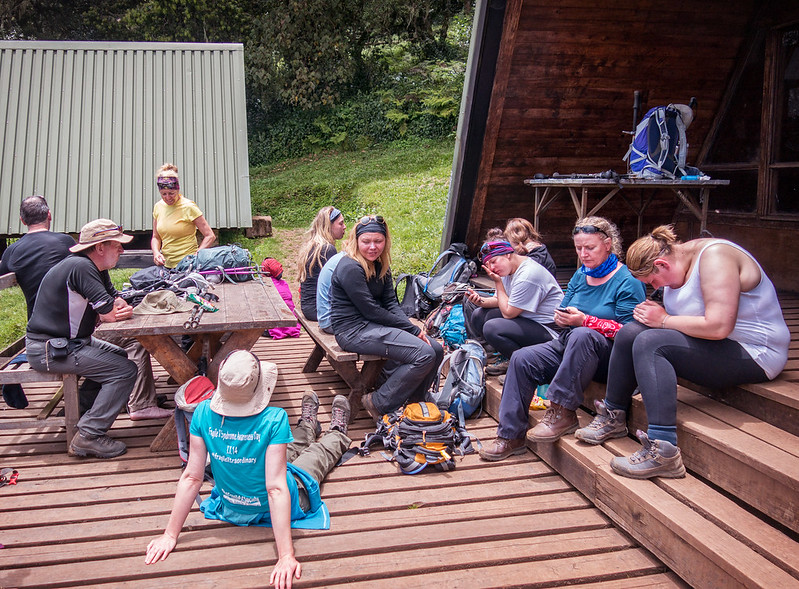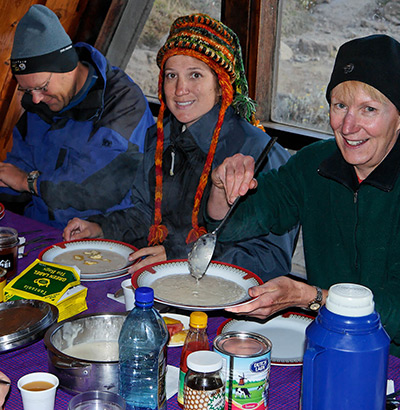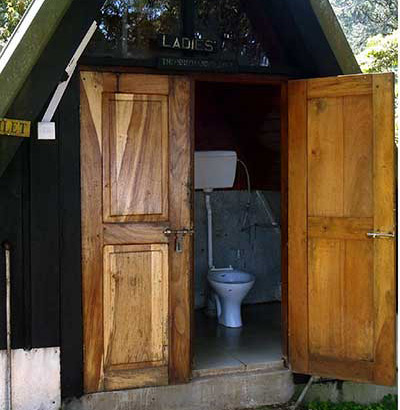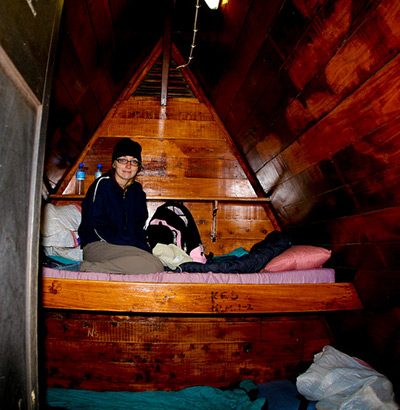The only route that offers huts in the form of dormitory-styled cabins as a form of accommodation on Mount Kilimanjaro is the Marangu route. The Mandara Huts and Kibo Huts each have 60 bunk beds, while Horombo Hut has 120 bunk beds. The Marangu Huts provide dormitory-style lodging with four to twenty bunk beds per room. There is no option to rent a private room, and beds are assigned on a first-come, first-served basis. As a result, you should expect to share your hut with strangers. It is worth mentioning, however, that the huts do not include beds or pillows, which are provided by tour companies. You will be responsible for bringing your own sleeping bags. The Mandara A-frame Huts, which have solar lighting, flush toilets, and piped water, will be your first stop.
- Mandara Hut
- Horombo Hut
- Kibo Hut
The most unique thing about the Marangu Route is that it is the only route up Mount Kilimanjaro that does not allow camping, thus hikers must sleep in fixed huts rather than tents.
These dormitory-style shelters give additional wind and rain protection, making this a popular route for climbers during the rainy season, which occurs in April and May. Mandara and Kibo Huts each have 60 bunk beds, while Horombo Hut has 120 bunk beds.
Trekkers will sleep in bunk beds with a modest mattress and pillow while staying at those huts.
They’ll also be able to buy candy bars, bottled water, and soft drinks, which is why the Marangu route is also known as the “Coca-Cola Route.”
The Marangu Route has a reputation for being an easy trip because of the long, steady rise to each of the day sites. However, don’t underestimate this track; the approach to the last camp, with around 1000 meters of vertical gain on that day alone, may be physically difficult.
Staying at the mountain cabins on the Marangu trail is an alternative to camping on Kilimanjaro. The Kilimanjaro National Park maintains these permanent tiny villages in picturesque areas on the mountain’s eastern flank.
The oldest and one of the two most popular climbing routes, Marangu is also known as the “Coca-Cola” route since it was formerly simpler to climb than the more difficult Machame Route (Whiskey Route). In the past, these were the only routes that were routinely climbed. Because climbing companies do not need to pay a huge staff to transfer camp equipment from site to site every day, Marangu is the most affordable route to climb.
The A-shaped Marangu Route Huts.
Climbers can only stay in huts on the Marangu route up Kilimanjaro. Yes, there are beds, but don’t anticipate luxury: they are basic dorms that sleep anywhere from four to twenty people, depending on the camp.
Mandara and Horombo camps include smaller cottages, while Kibo Summit Camp features huts that can accommodate up to 20 people.
Sleeping arrangements are designated by park officials, so you may be mixed in with other climbing groups. This may be a terrific way to meet other hikers, or it might be uncomfortable if you don’t enjoy being in close quarters and want to be alone.
Don’t trust anything you read on the internet: these huts lack hot showers, toilets, and other facilities. This also means that you won’t have access to energy; you’ll have to rely on chargers or solar devices to keep your devices charged.
These cottages are just sleeping quarters for bunk beds. Of course, there are no linens on these beds, and the huts are not heated, so bring a good sleeping bag with you. Tranquil Kilimanjaro can provide you with one. We carry a huge selection of high-quality items for a Kilimanjaro expedition.





